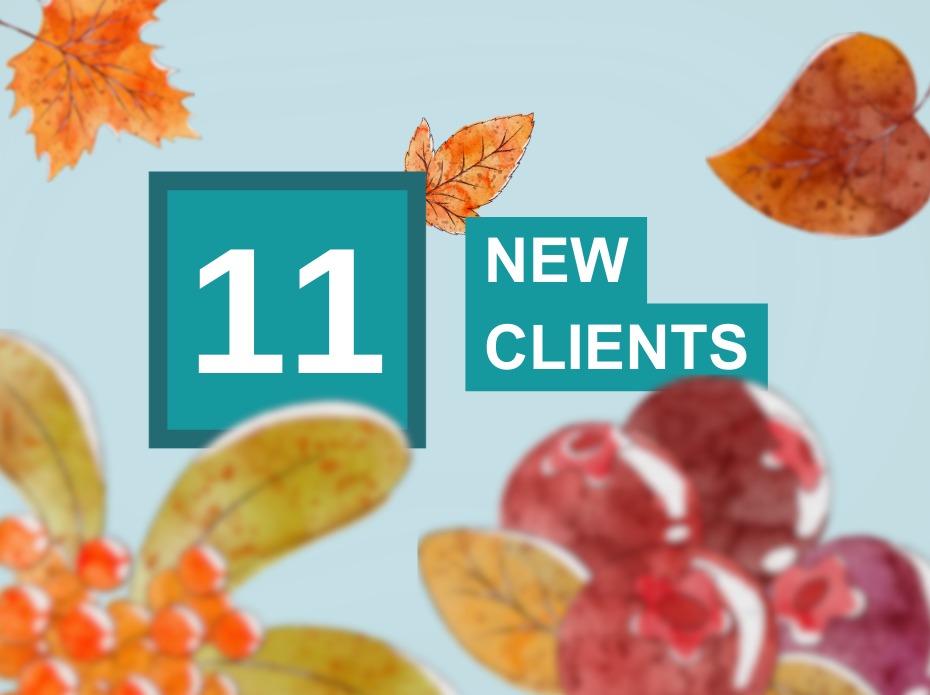
A Personal Interview with Todd Marksberry, CEO of Canvas CU
February 22, 2019

Hello and welcome to our second edition of The Juicy Stuff: An Interview Series with Our Board Members. Each month throughout 2019, I will be interviewing one of our board members and publishing it to our blog, right here. The interview is a mix of strategic questions as well as surprise questions to keep things entertaining.
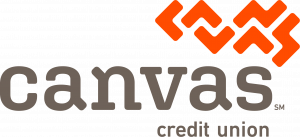 This month, I interviewed Mr. Todd Marksberry, President/CEO of Canvas Credit Union.
This month, I interviewed Mr. Todd Marksberry, President/CEO of Canvas Credit Union.
Walking into Todd’s office is like walking into an off-world utopian space colony. His office is huge, very white, and very clean. It has sweeping 240-degree views of Colorado’s front range.
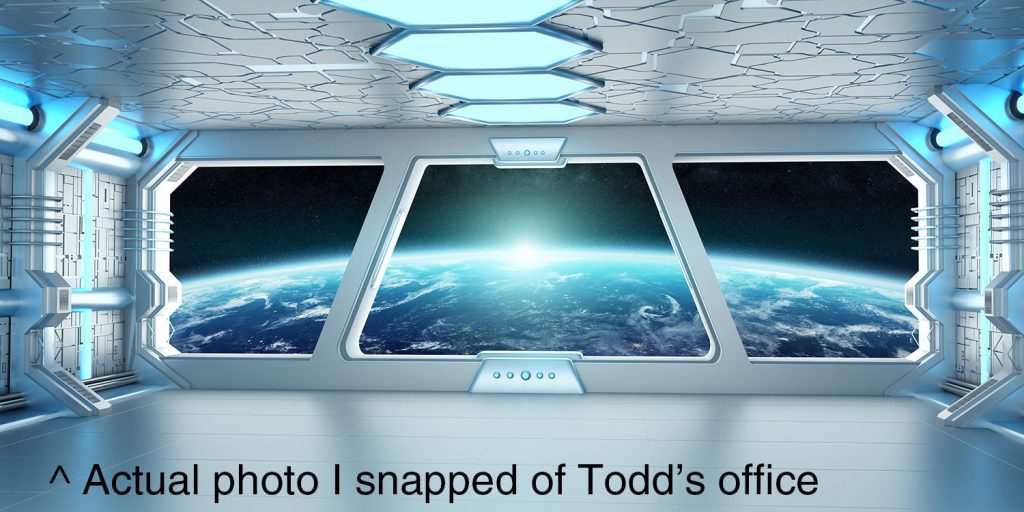
Waiting calmly at a sleek and (you guessed it) white table are Todd, as well as Tansley Stearns, Chief People & Strategy Officer at Canvas CU. You may recognize Tansley’s name from her previous position at Filene Research Institute, where she presented regularly on the credit union circuit. You may recognize Todd’s name because, well, everyone knows who Todd Marksberry is.
I sat on a white bar stool, trying to work on my posture, and began the interview.
What are your credit unions goals for 2019?
Todd: I’ve been here three and a half years and we’ve been making a lot of investments in technology. We’ve changed our consumer LOS. We’ve changed our mobile, online banking and mortgage LOS. We’ve been working on redesigning our branches to integrate our branding [from Public Service CU to Canvas CU].
Our goals in 2019 are to actually stay the course. Now’s the time we’re going to see the fruits of our labor from all the investments that we’ve made over the past three and a half years. We want to follow that through and see how the changes impact our members and our employees. Our goals are wrapped around continuing that strategic plan and that push.

Alicia: Is your branding wrapping up or is there still a lot more to do?
T: Tons more. We will be continuing our rebranding over the next few years. We’re only six months or seven months in. About a week and a half ago, we conducted focus groups to check in to see how things are going six months into the launch. What’s the response? What kind of reaction are we getting from members, non-members, employees, etc.?
We have a lot of work to do from the aesthetics perspective to incorporate the branding into our branches. We have signage up in quite a few areas and in our Fort Collins, CO branches, in particular. But we still have 24 of our 26 branches that need the interiors redesigned.
A: It seems like you’ve done so much already. It seems like it’s been years since you announced the brand change! How long would you say until the project is complete?
Tansley Sterns (TS): A year and a half. It’s funny – we had our staff meeting and when we asked for questions from the team, one of the comments was, “So now that branding is over…”. The branding is nowhere near over!
The purpose of investing this much time and effort into a brand is that you have the opportunity to leverage it and it provides opportunities to grow. I got the chance to have a sneak preview with some of the focus groups and what’s wonderful is that we have young adults talking about our brand in ways like “fresh, new, hip,” – ways you don’t typically hear credit union brands being described. That gives us the platform to really go out and tell our story, which we haven’t done a great job of doing in the past. Now we can go do that right.
A: It is a lot of work. I think one of the biggest projects you can do is a name change and rebranding.
TS: Our team is so jazzed about it. We had our reveal party where we shared what the name was going to be. People were cheering as if they were in a rock concert.
A: That’s awesome!
What are you most curious to learn about?
T: What am I most curious to learn about? …Hmm. [Long pause] I would think within the context of business, I’m most curious to learn about what’s on the minds of younger members or potential members. What are the things that are important to them? How can we help serve them and help them afford life? I’m really curious about the psychology of consumers, especially the younger folks. They are changing dramatically and I’m extremely curious to know what those twenty-somethings are thinking as it relates to their finances – how can we sidle up beside them and partner with them? What we’re finding is that they are entirely different than older folks my age. Their needs are totally different than what our needs were 25 years ago.
A: Even twenties is such a diverse decade that 20-year-olds compared to 29-year-olds are so different. I am now 31 and even someone that’s 10 years younger than me is totally different. How a 21-year-old thinks and how they work with technology is totally different than someone in their early 30s.
T: That’s what I’m curious about learning. I’m interested in knowing what makes people tick.
TS: Our focus groups are fascinating. We learn that behavior is sometimes irrational. One of the things we were talking about with folks in the focus group was where they do their banking. A young guy was talking about how he uses an online bank and we asked why, and he said, “Oh, because I have this amazing app and it does all these great things.” We had the opportunity to ask him about the features of that app and what are they doing that is so great. He said, “Well, I mean, it’s just really cool.” So, there wasn’t actually anything functionally better, it was the fact that it was new, it was online, and had a vision of it being very different. But I’m not sure that the underpinnings are different. These insights really help us not only with messaging, but also with product development.
What was challenging for you last year as a CEO?
T: Working on the rebranding. As I said, we rebranded at the time an 80-year-old company. We were working on some major projects as well: the implementation of a new mortgage loan origination system, a new consumer-facing mortgage application for our members, and the redesign of our branches for a new way to deliver service. I think the challenge was doing all of those things and then still keeping our members very involved and communicating in terms of what we’re doing as an organization.
But I think most importantly, keeping our 530 employees engaged and trying to get them excited about our vision and what we’re trying to accomplish. Our perspective was like, “So hey, we’re doing all these things. We’re asking you to work super hard, and we really want you to love what we’re doing.” That was probably the biggest challenge for me, balancing doing all those things. Being able to execute and accomplish what we had set out to do, but keeping our Canvas family, our 530 employees really engaged and excited about it as well was a challenge.
A: Do you have any tips on rebranding? I know a lot of credit unions much smaller than you are going through rebranding and it’s very challenging even for a staff of 10.
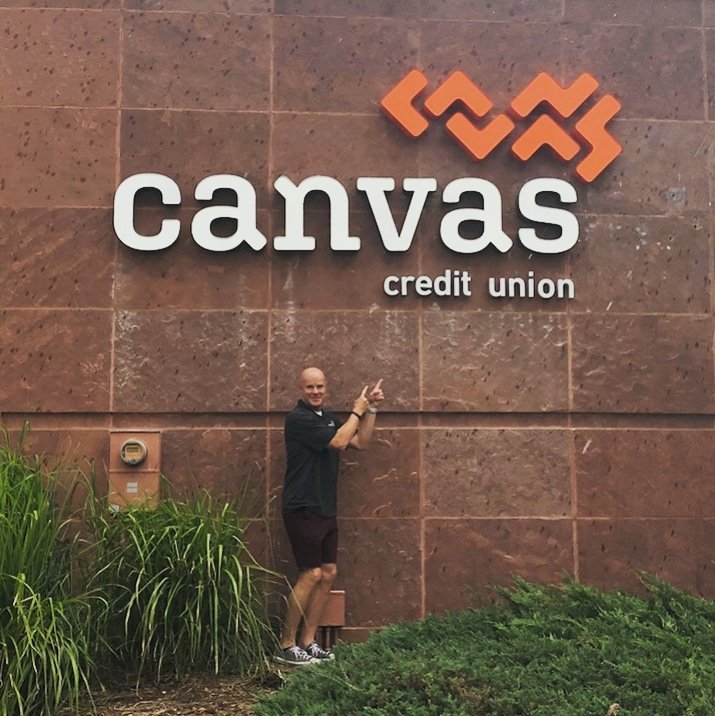 T: If I would give advice, it would simply be to always err on the side of over-communicating. We were very transparent with our entire 530 employees throughout the process. We let our staff know, “Here’s what the name is going to be, here’s what the brand is going to be. Here’s what brand means.” It’s not just about the name change, the colors or the logo. It’s about so much more, and we really spent an enormous amount of time and effort at helping them understand this in many, many face-to-face and meetings.
T: If I would give advice, it would simply be to always err on the side of over-communicating. We were very transparent with our entire 530 employees throughout the process. We let our staff know, “Here’s what the name is going to be, here’s what the brand is going to be. Here’s what brand means.” It’s not just about the name change, the colors or the logo. It’s about so much more, and we really spent an enormous amount of time and effort at helping them understand this in many, many face-to-face and meetings.
We leveraged video content constantly – every single week we had a video series. We were going on this journey. Once we had done the brand reveal, as Tansley mentioned, every single week we had something in a video to help our staff better understand the journey, where we were in the process, and what was next. I would just simply say it’s being transparent with your members, transparent with your employees and constantly communicating with them along that journey.
The last piece of advice I would give would be to not launch the brand and then ask, “You guys get it, right? You understand what we’re saying?” Then you move on to the next thing. I would say that’s a fatal error people could make. You can’t presume that they’re going to say, “Yes, we love that name! We love Canvas!” It doesn’t work that way.
Imagine the next year committing to learning one new thing. What would it be?
T: If I had the time to learn, I’d learn how to play the guitar.
A: Do you play at all?
T: No. It would be from scratch.
A: What about you Tansley?
TS: It would be yoga. I’m a runner and I can’t touch my toes. I’m super inflexible and I’m also super inpatient. Yoga would be really good practice for me.
You’ve been in the credit union industry for decades and seen a lot of things. What has surprised you most, something you never expected to happen to the industry?
T: In the 26 years I’ve been in the credit union industry, the thing that has changed so much is that most credit unions back then were still, in some form or fashion, tied to their original sponsor or were very closely aligned with workplace. Credit unions were not necessarily thinking about outside competition. We were just basically thinking, “How can I effectively get a car loan to an employee?” My first credit union served AT&T and BellSouth employees down in Miami and the goal was how to get car loans to the folks who work for BellSouth. You know, line workers are out there in vans, climbing up on telephone poles. How do we get them basic checking accounts and services like that? We didn’t necessarily think about the competition. We didn’t think about a Wells Fargo or a Bank of America, and frankly we didn’t even think about other credit unions. What I’ve seen in the past 20+ years is that credit unions have been waking up to “…Holy cow, we have to compete with everybody!” It’s funny, credit unions always used to say they don’t compete with other credit unions, but we do every single day, with every financial institution that’s out there, both traditional financial institutions and online players.
It’s caused our industry to wake up and say, “Hey, if we really want to compete, if we want to win, we’re going to have to pay attention to what the competition is doing.” I wouldn’t say that 26 years ago you heard any credit unions talking about winning. While we’re friends with a lot of folks here in town, we’re still playing to win every single day. We’re not playing for a tie by any means. There is plenty of business, but we would like to have all of the business and that’s a difference in the industry that I’ve seen over the past 26 years. Credit Unions are waking up and saying, “We’re going to have to play to win!”
You’re sitting in front of the TV. What are you watching?
T: I don’t sit in front of the TV very often. If I am, I’m typically watching…for the one thousandth time, an episode of Law and Order.
A: There’s a lot of episodes!
T: Yeah. That or watching football or basketball.
If you had a time machine and you could go back and visit any year, where would you go visit for a day or two?
T: Hmm. I have never thought of that. I’d probably go back to my senior year, 1983, in my football season.
A: Was that in Colorado?
T: No, that was in Kentucky.
A: So you’re a football player?
T: I was a wide receiver.
A: Do you still occasionally throw the ball around?
T: Some of us here are getting ready to play in a spring league of old men.
A: That’s the flag football I’m guessing…
T: We’re a competitive bunch here. I did say we like to win.
A: Yes. Yes. No tackling though.
T: I wouldn’t rule that out.
A: What about you, Tansley?
TS: I would go back to the 60s and see my parents as young adults. They were hippies and they were madly in love, and I think it would be really fascinating to see that era anyway. It was a really tumultuous time. It would be historically interesting, but to see your parents as young humans might be incredible as well.
A new wave of credit decision makers is coming up now. What advice would you give them?
The advice I would give them is the kind of advice that I give our new employee orientation class. They’re not just young people there. There are some folks who have been in the work place for many years, but I would give them this advice: be very curious, be very hungry, and raise your hand and ask for opportunities to do other things. Don’t ever believe that anybody owes you anything. Everything that you can accomplish or will accomplish in your career is going to be a function of really hard work and patience (because most young folks now have no patience whatsoever). Go into it with a mindset that you’ve got to work really, really hard. Nobody owes me a darn thing. Everything I’m going to get, I’m going to get because I earned it and I have to raise my hand.
Todd’s not going to walk around and say, “Hey, you look like you would like to do something. Would you like to do something else?” It’s their responsibility to say, “I would like to learn more. I’m in the communication center on the phone, but I’m going to school right now too. I’d like to be an accountant. Can I get the opportunity to maybe spend some time over in our finance department and sit side by side, and oh by the way – not expect to be paid for it? I’m going to in my spare time. Can I go over and learn more about that department?” That’s the kind of advice I would give. I say that to my adult kids: Nobody owes you anything. You’re going to have to work hard. Never feel entitled to anything.
A: I think that applies across many industries.
T: Sure. I think it’s just life advice.
A: Life advice interview session with Todd Marksberry.
 Name someone you admire greatly.
Name someone you admire greatly.
T: My Dad.
He’s just an incredible guy. He’s a retired policeman. He’s super humble and has a servant heart. He’s the guy that taught me that nobody owes you anything and that you have to work your tail off. He’s the one who gives me advice every time I talk to him on the phone. He asks, “Are you taking really good care of those people? You know you’re nothing without them.” You know he’s just that kind of guy. And yeah, he’s my hero.
A: It’s great. Makes me think of my Dad. I don’t see him often but I think everybody’s heroes are their dads. Dads are great.
Tell me your thoughts on the future of credit unions.
I think that the future is bright for credit unions, but what you’re going to find is that a lot of credit unions are going to partner with one another. I think in particular, larger credit unions are going to start shifting, and that’s already afoot. And it’s happening in conversations behind closed doors all over the country where larger credit unions are talking to other large credit unions about the ways in which they can partner (which means merge.)
And I think that is what’s in the future for our industry. Scale is going to matter greatly for our industry and I believe that. Now, that doesn’t mean that I don’t think that smaller credit unions are going to go away. Those smaller credit unions are going to have to make a decision. I believe that they could continue to win with a niche play and just say, “Here’s what we’re going to do and we’re going to do it extremely well.” I think of guys like John Faries at Columbine FCU [$60M]. It’s a relatively small credit union, but John is doing fantastic things there at Columbine. And you know, leaders like John are going to have to decide, what is it that we do extremely well and let’s lean into that. And I think that they can.
But they can also do that in partnerships with larger credit unions, not merging with them, but rather investigate how they partner with a larger credit union in terms of resources. Maybe there’s some outsourcing opportunities. But again, I think folks like John will figure out what he’s going to do: Columbine is going to be known for this thing and we’re going to knock it out of the park.
I don’t know for sure it’s going to happen that way. But I think that’s what’s in the future for us.
A: I don’t talk to many people who do think that there is a future for small credit unions. That’s nice to hear because I want there to be a future for them because I think that’s what makes that credit union industry so unique. It’s having those little guys.
T: Those small credit unions who think that they can do everything will be challenged. It’s a very difficult job. John at Columbine is pretty rare. He pedals pretty fast. He’s constantly thinking about the future, but I’m sure if you sat down with him, he would say, “Right now I’m figuring out what we do extremely well and I’m going to lean into that.”
TS: There’s another really good example in my home state of Michigan, a man named Hank Hubbard who runs a credit union called One Detroit CU. To Todd’s point, he decided that they were going to serve Detroit, when many other organizations are turning away and focusing on other communities to serve. He understands his community and he’s built products and services that might not work here in Lone Tree, but work brilliantly in Detroit.
He’ll have a very bright future because he’s strategically figured out his narrow focus.
The other critical area for the future of credit unions is telling our story…and our story can’t be about products or services. Nobody cares. People care about what’s in it for them. How do we help consumers understand the positive impact credit unions can make?
A: Thank you so much Todd and Tansley.
T: Absolutely. Thanks for thinking of us.
Todd walked me to the elevator, down a long hallway that was flanked with glass panes frosted with the Canvas logo etched in a detailed design. Is this even 2019 I am living in? Welcome to Canvas Credit Union.
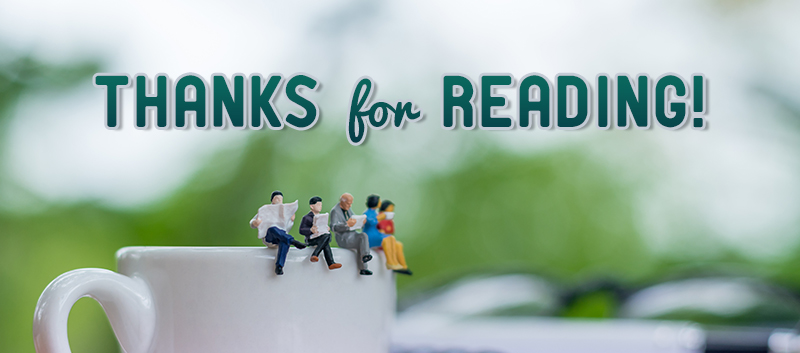

 Name someone you admire greatly.
Name someone you admire greatly.